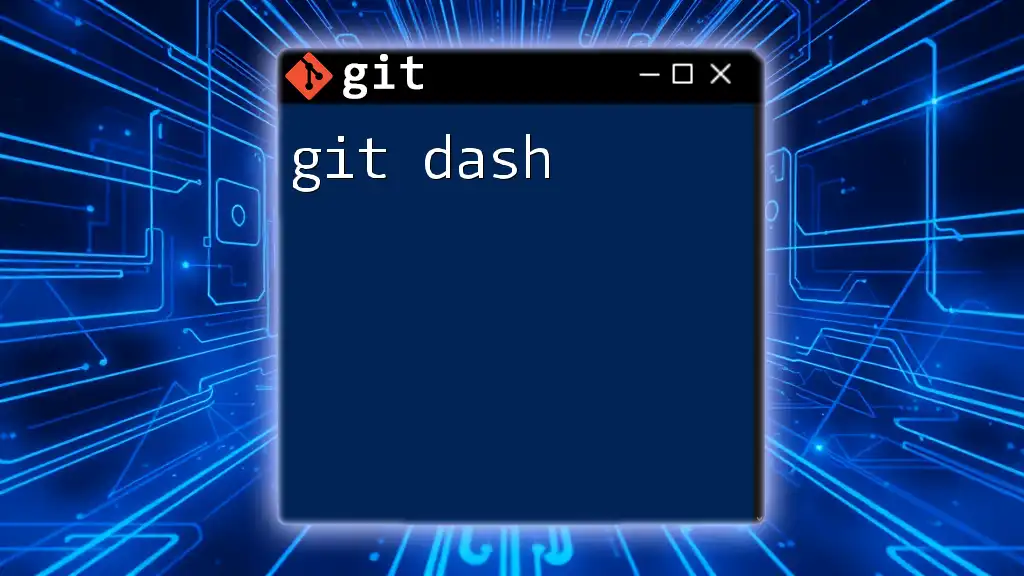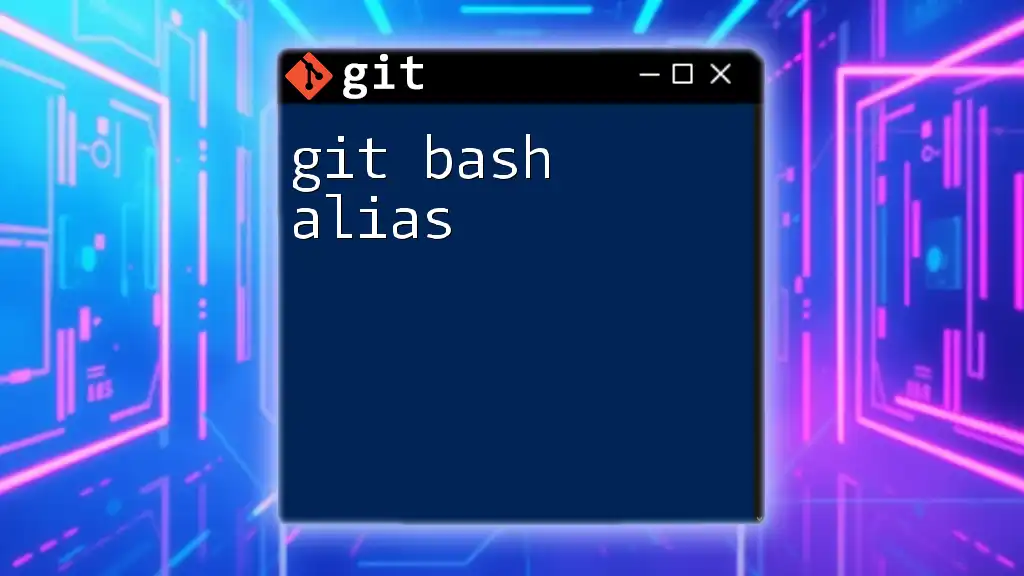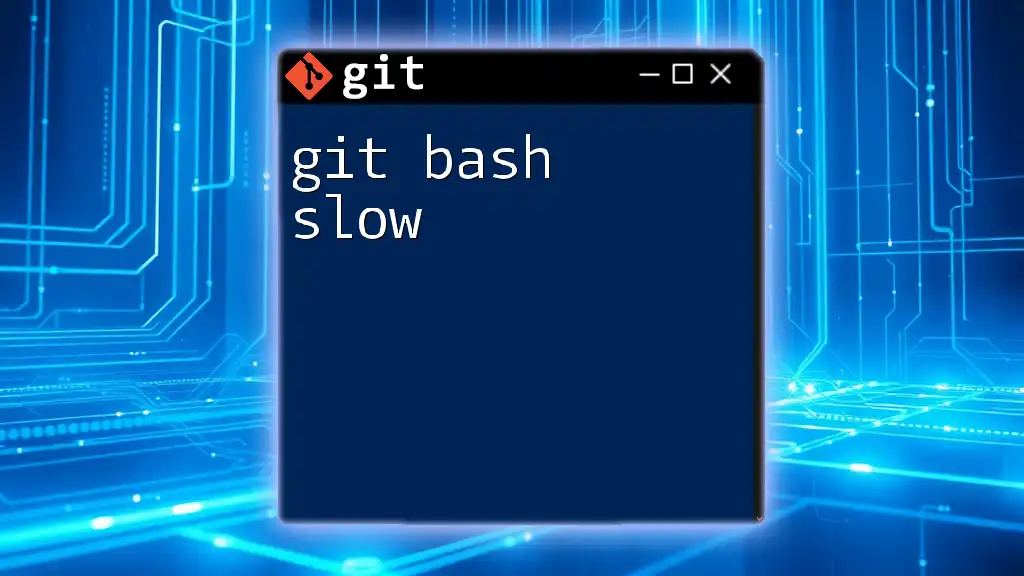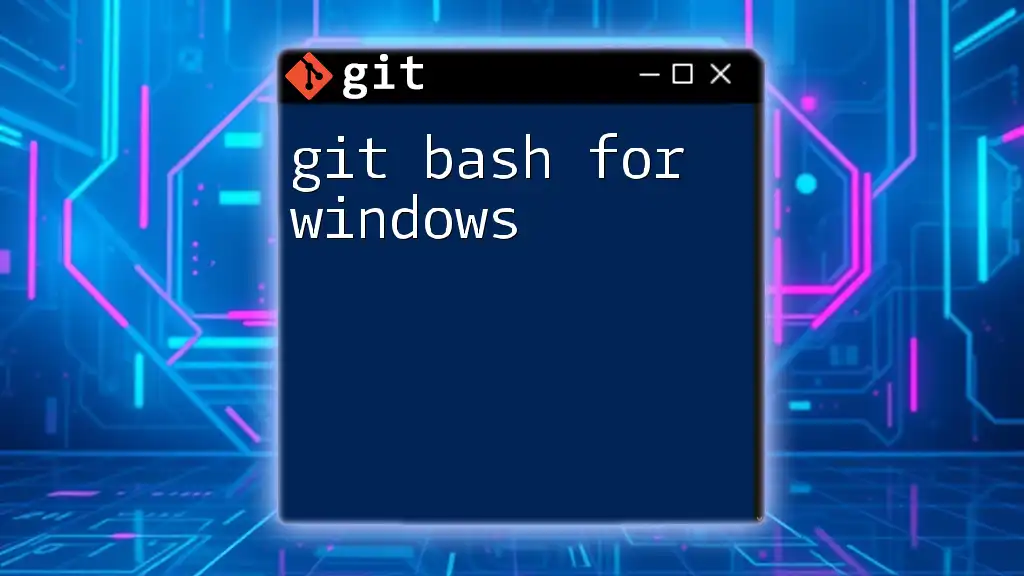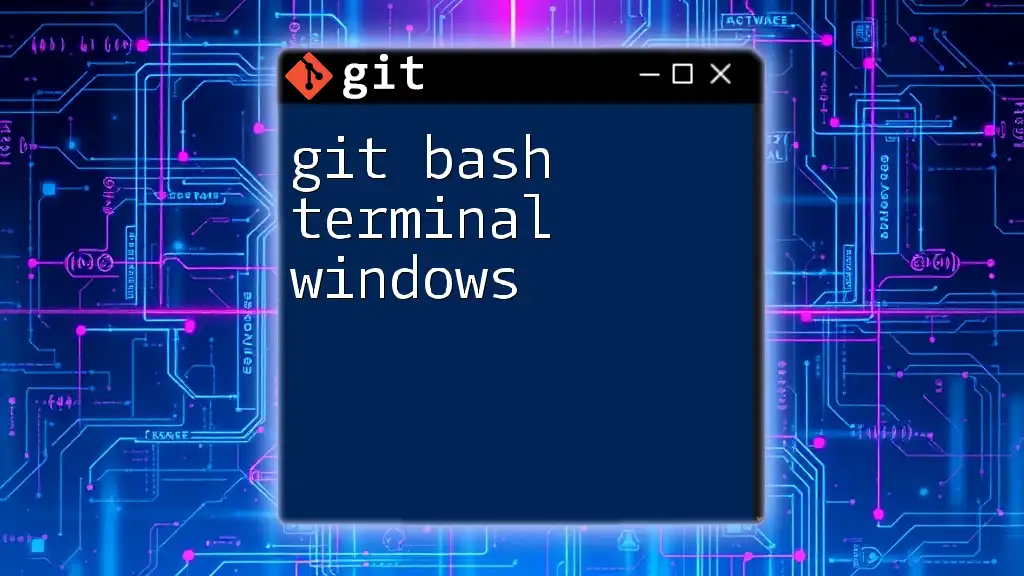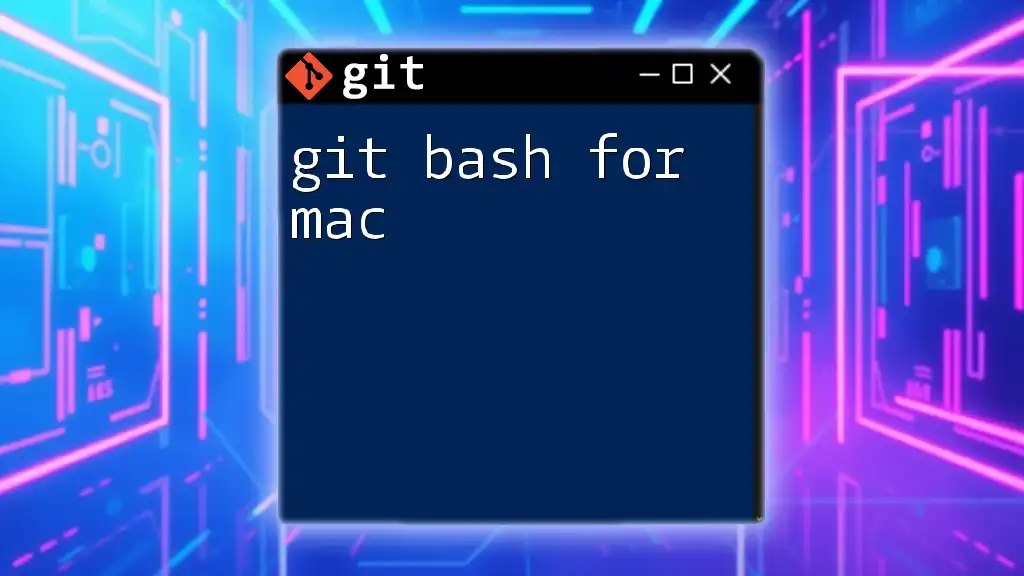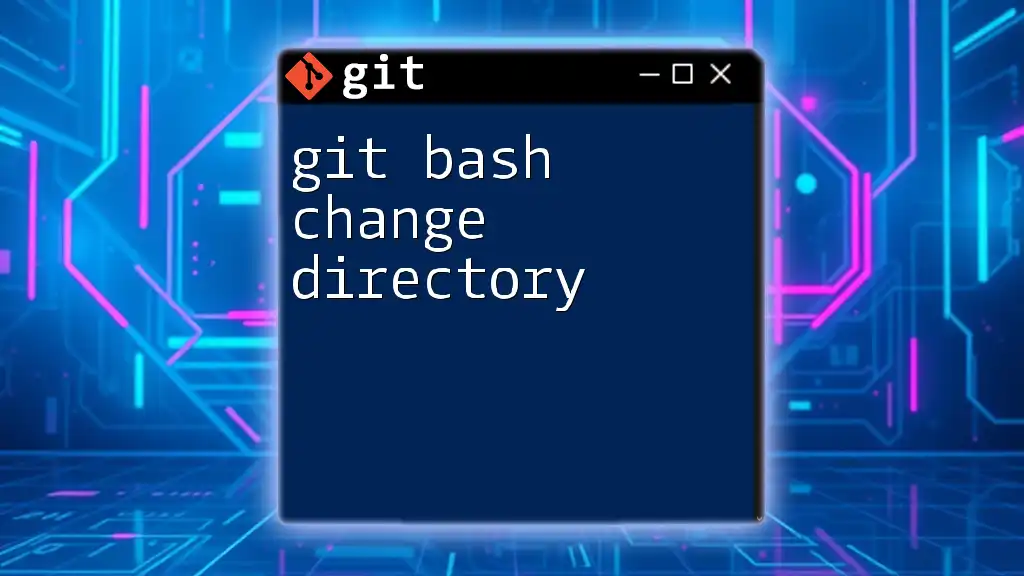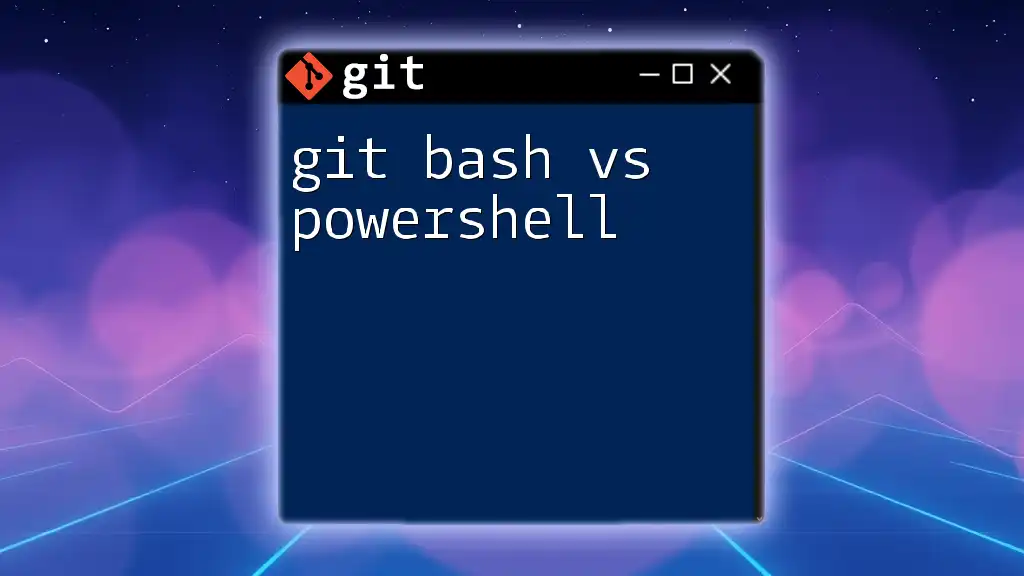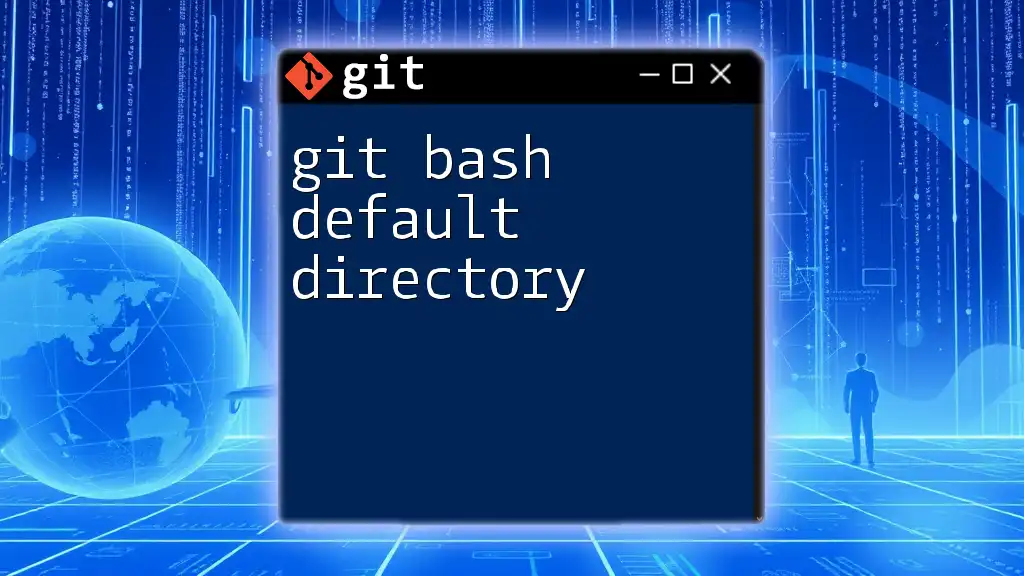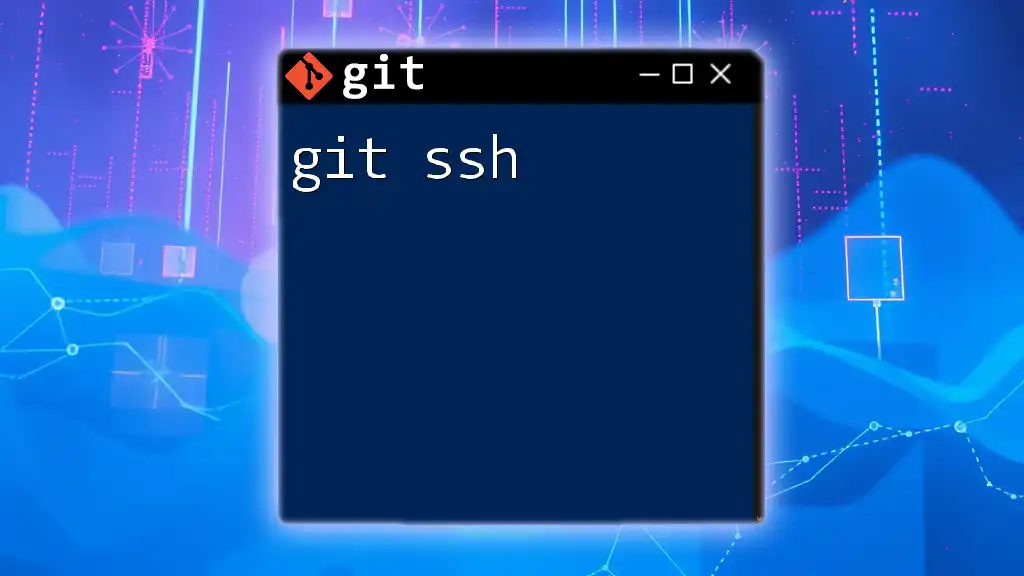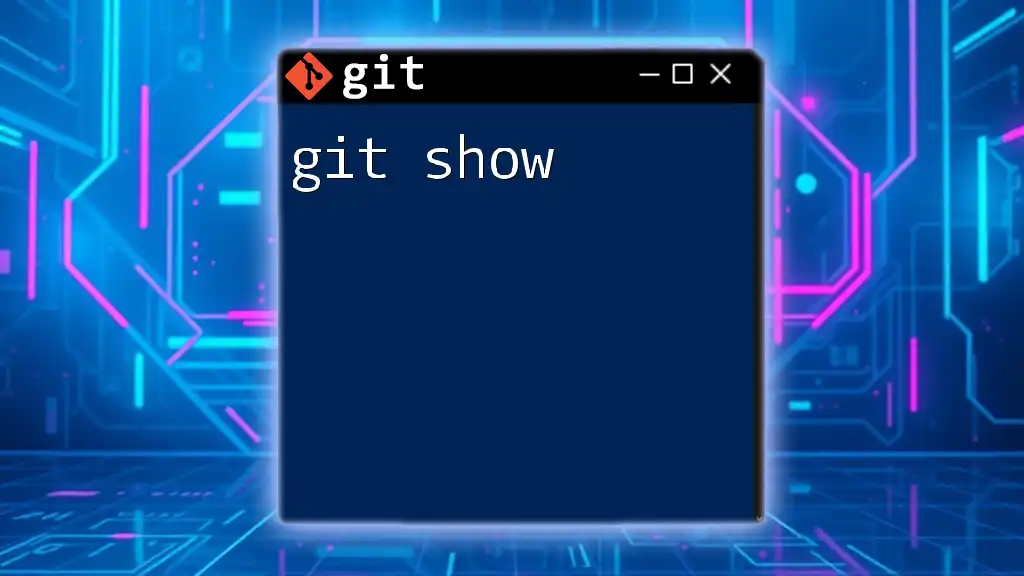"Git Dash is a powerful command line tool that provides users with quick access to Git documentation and commands, enhancing their efficiency in version control."
git dash <command>
What is Git Dash?
Git Dash is a graphical interface that simplifies the use of Git commands, making version control more accessible for both beginners and experienced developers alike. By providing an intuitive visual environment, Git Dash enhances the overall user experience, bridging the gap between command-line Git usage and a more approachable interface.
Why Use Git Dash?
Git Dash stands out among other Git interfaces due to its user-friendly design. It allows users to visualize their workflows, making Git not just a powerful tool but also an easy and enjoyable one. With its clean interface, enhanced accessibility, and real-time updates, Git Dash empowers users to manage their projects with confidence and efficiency.
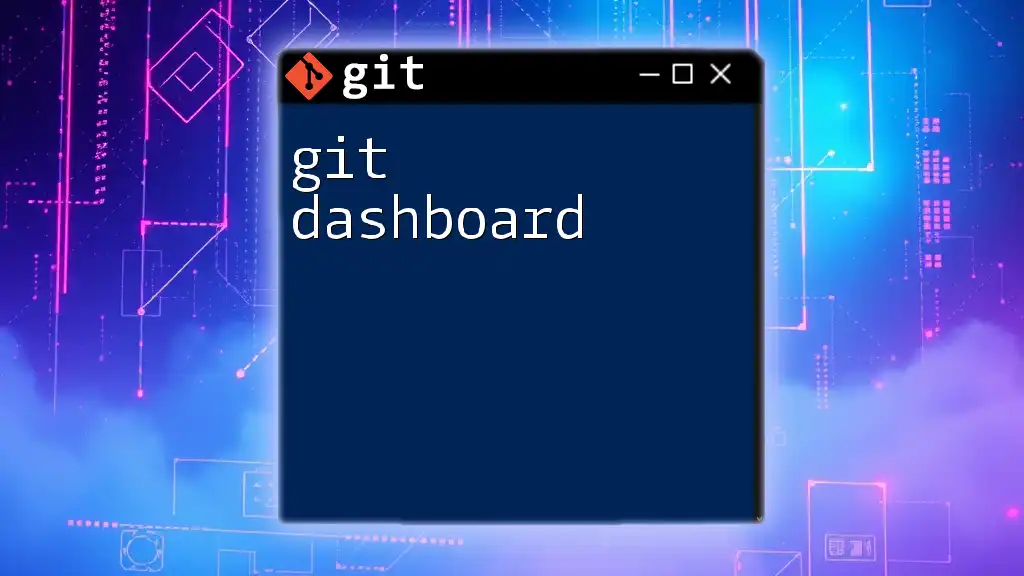
Installing Git Dash
System Requirements
Before diving into the installation, it is essential to ensure that your system meets the minimum requirements. Git Dash is compatible with the following operating systems:
- Windows
- macOS
- Linux
Step-by-Step Installation Guide
Downloading Git Dash
You can find the latest version of Git Dash on its official website or repository. Make sure to download the correct version for your operating system.
Installation Process
Windows Installation To install Git Dash on Windows, follow these steps:
- Run the downloaded installer.
- Follow the on-screen instructions to complete the installation.
# Ensure Git is installed
git --version
macOS Installation For macOS, you can install Git Dash using Homebrew:
brew install git-dash
Linux Installation On Linux, you can typically use your package manager to install Git Dash. For example:
sudo apt-get install git-dash
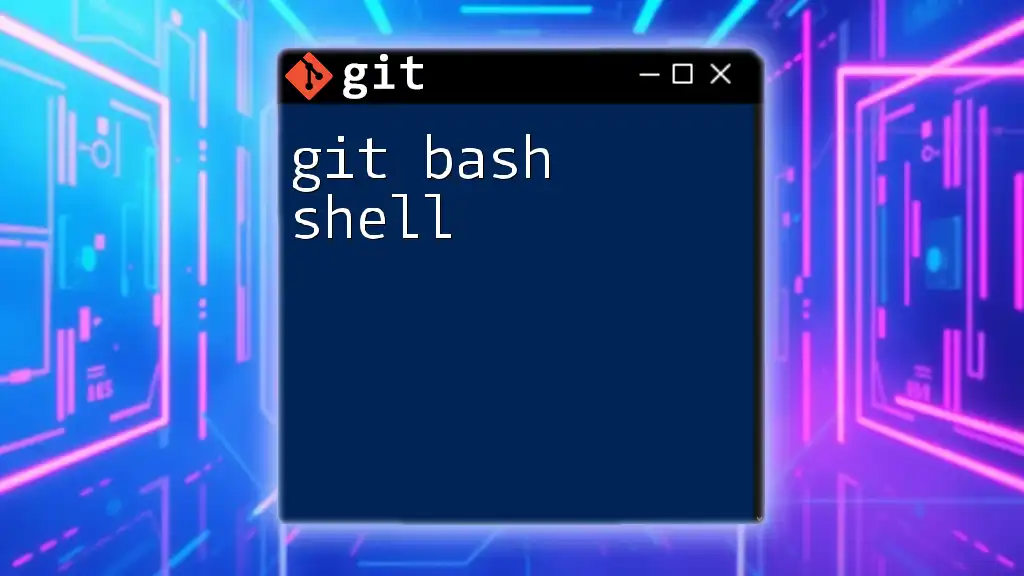
Getting Started with Git Dash
User Interface Overview
Upon opening Git Dash, you will encounter a clean, organized layout that offers easy navigation. The Repository Explorer, Terminal, and Commit History panels are prominently displayed, allowing users to switch between functionalities seamlessly.
Creating Your First Repository
Creating your first Git repository in Git Dash is straightforward.
To initialize a new repository, simply navigate to the desired project folder and execute the following command:
git init
This command sets up a new Git repository, enabling version control for your project. If you want to connect this repository to a remote location, you would add a remote origin like this:
git remote add origin [URL]
Replace `[URL]` with your repository's link to ensure seamless collaboration.
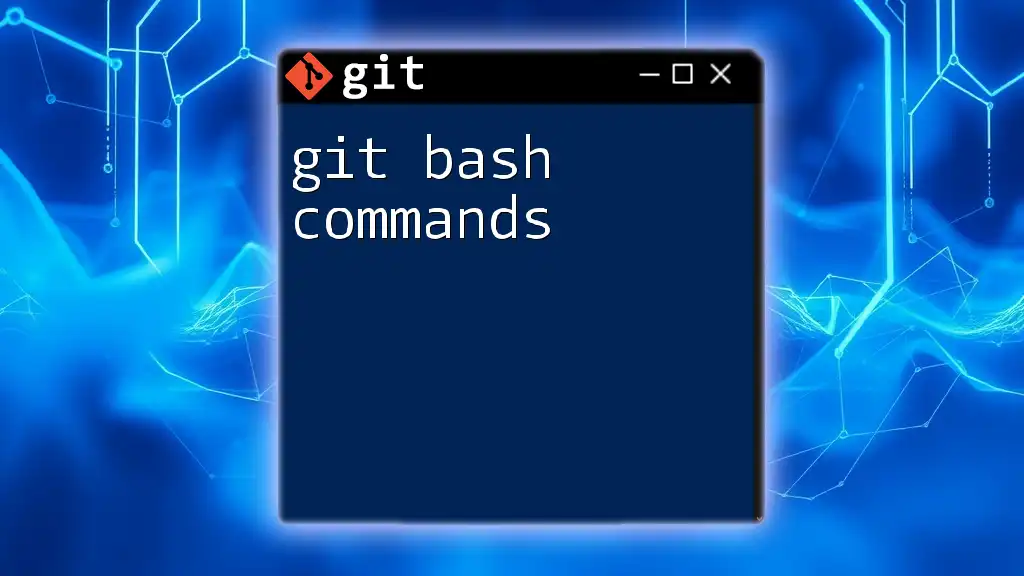
Essential Git Commands in Git Dash
Basic Commands
Git Dash makes it easy to execute fundamental git commands. Let's explore some essential commands for managing your repository effectively.
- git add: This command stages changes before committing them to the local repository. For example:
git add .
This command stages all modified files in the directory.
- git commit: After staging changes, use the `commit` command to save them to the repository. It's recommended to write meaningful commit messages to maintain a clear project history:
git commit -m "Your descriptive commit message here"
- git push: Finally, to upload your changes to a remote repository, execute:
git push origin main
This command sends your committed changes to the `main` branch on your remote repository.
Advanced Commands
For users looking to expand their capabilities, advanced Git commands are crucial.
- git pull: To fetch and integrate changes from remote:
git pull origin main
This command retrieves updates from the remote repository and merges them into your current branch.
- git fetch: Similar to `pull`, but it only downloads the changes without merging:
git fetch origin
- git branch: Managing branches is essential for feature development. To create a new branch:
git branch new-feature
Switching to it can be done with:
git checkout new-feature
- git merge: Once your new feature is ready, merge it back into the main branch:
git checkout main
git merge new-feature
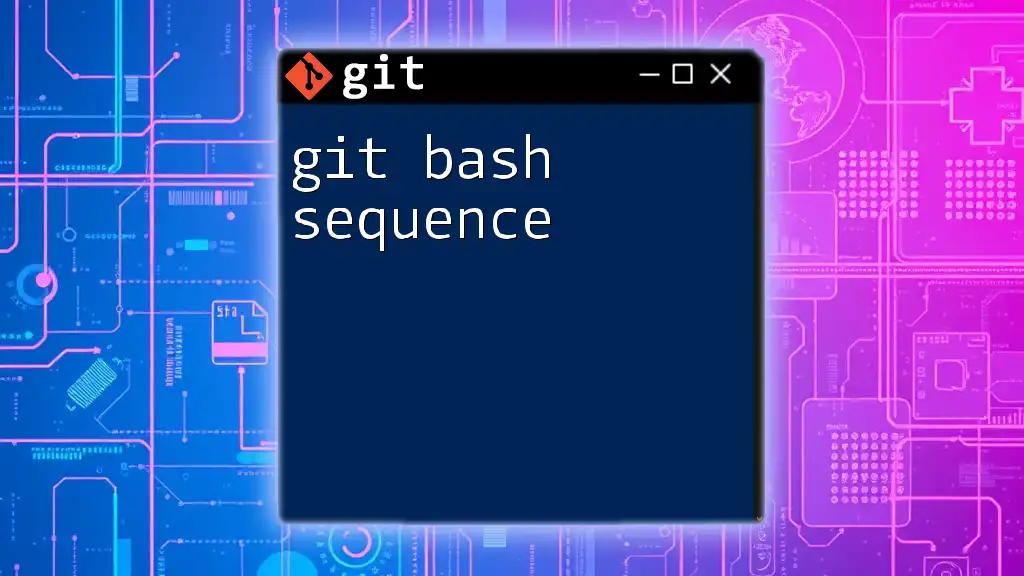
Useful Features of Git Dash
Graphical Representation of Commits
One of the standout features of Git Dash is its ability to illustrate commit histories graphically, allowing users to visualize their project's evolution. This feature helps identify trends, collaboration patterns, and changes in the project over time.
Built-In Terminal Access
Git Dash includes a built-in terminal that allows users to execute commands directly without switching applications. This dual functionality is advantageous, especially for power users who prefer command-line efficiency while having the visual aids of Git Dash.
Customization Options
Git Dash can be tailored to fit individual preferences. Users can adjust appearance settings, add plugins, or configure themes to suit their workflow better. This flexibility enhances productivity and user experience.
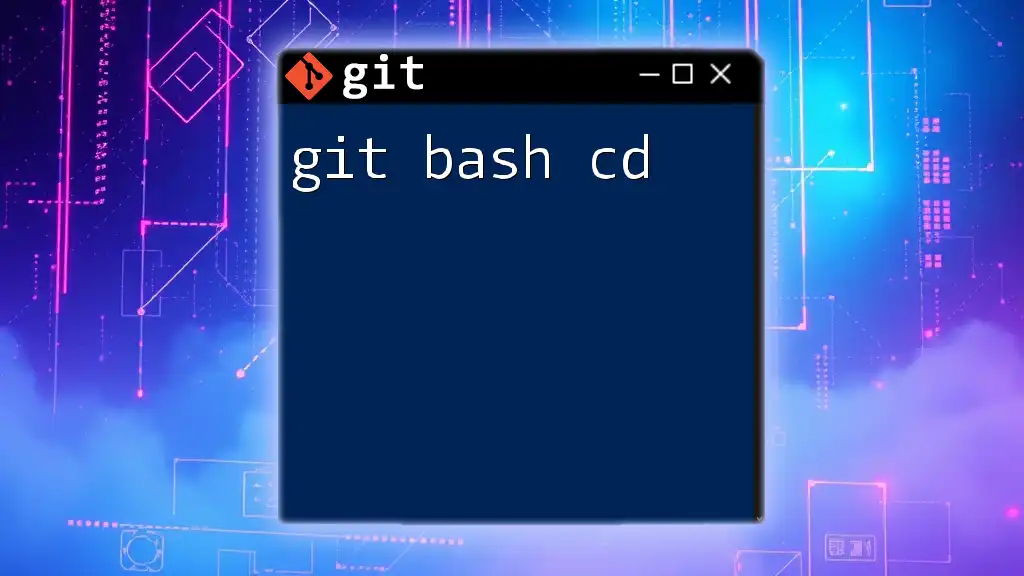
Troubleshooting Common Issues
Common Installation Problems
If you encounter issues during installation, ensure your operating system meets the requirements. Check for conflicting software and provide necessary permissions to proceed with the installation.
Command Conflicts and Errors
Errors may arise when executing commands. For instance, if you receive a message stating, "fatal: Not a git repository," ensure you've initialized a repository in your current directory using `git init`.
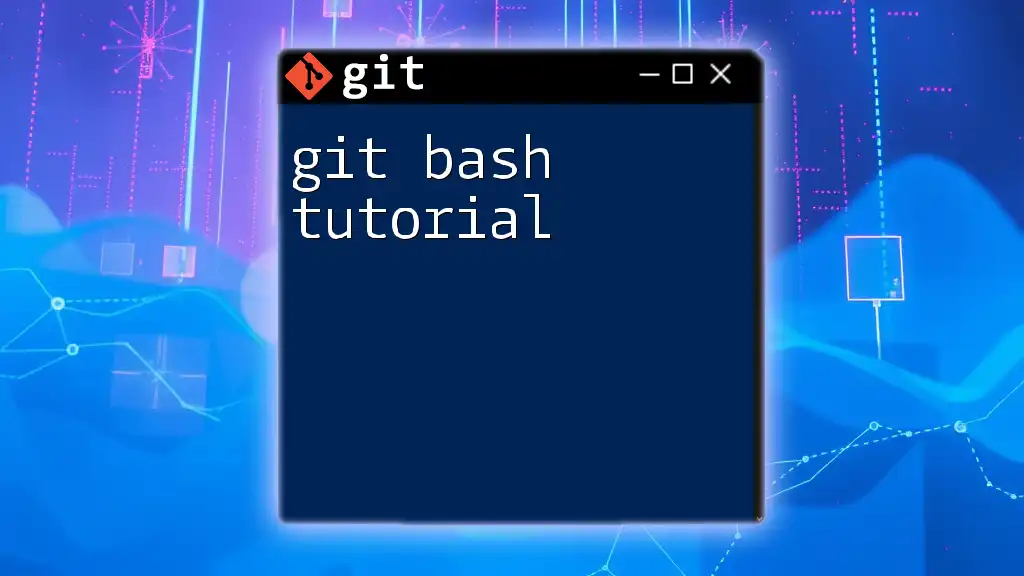
Best Practices When Using Git Dash
Effective Workflows
Establishing a well-defined workflow is vital for individual and team projects. Consider the Git Flow model for enhanced collaboration: it involves branching strategies that facilitate concurrent development on features while keeping the main branch stable.
Maintaining Clean Commit History
A clean commit history is crucial for future reference. Use clear and concise messages when committing changes and consider utilizing techniques such as squashing commits to streamline your commit history.
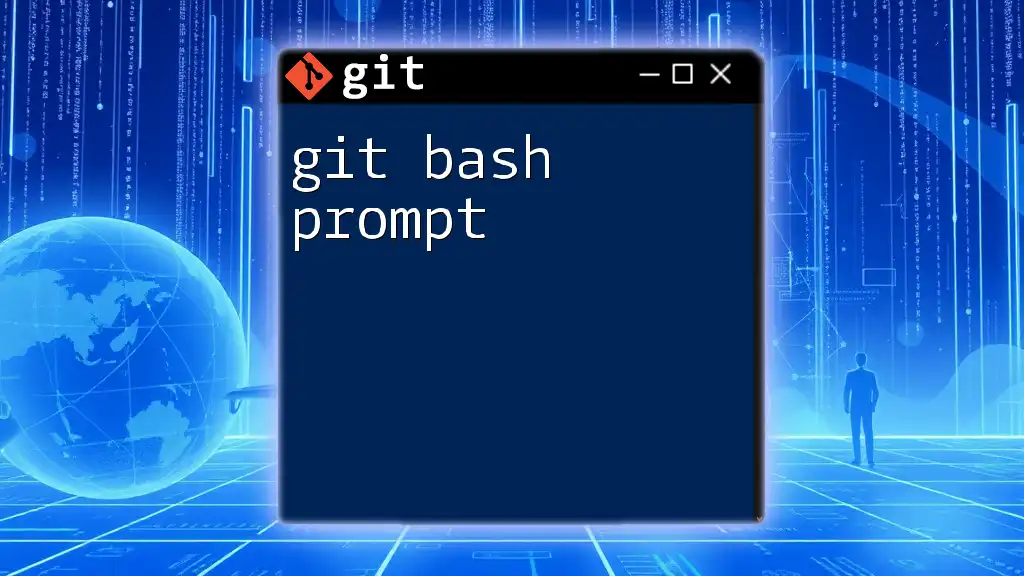
Conclusion
Git Dash is a powerful tool that simplifies the complexities of Git, enabling users to harness its capabilities with ease. Its user-friendly design and essential functionalities foster both learning and productivity. Dive into Git Dash, explore its features, and elevate your version control experience.
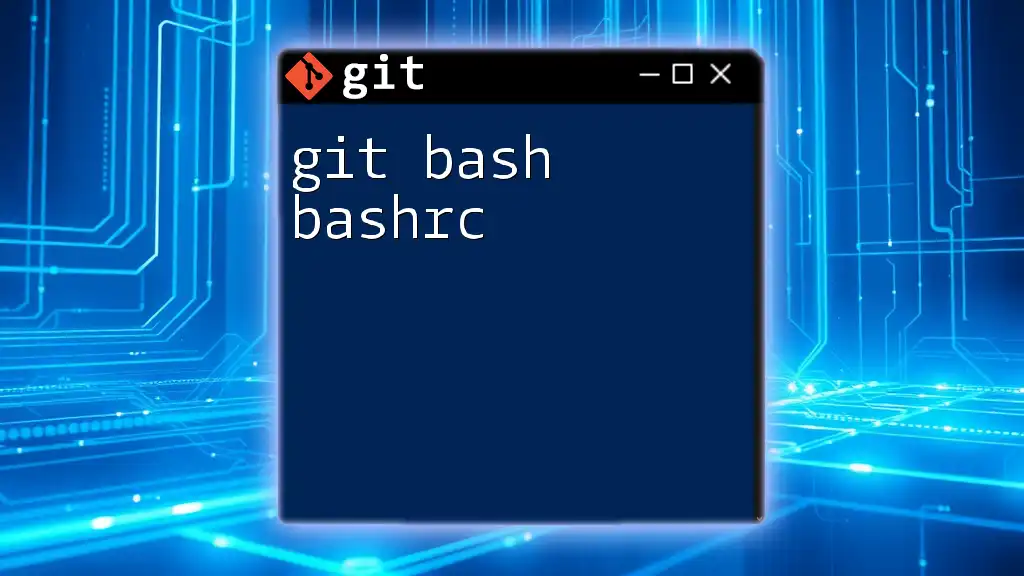
Additional Resources
For further learning, consider checking the official documentation, recommended tutorials and courses, and community forums that offer support and insights for navigating the Git Dash landscape.

